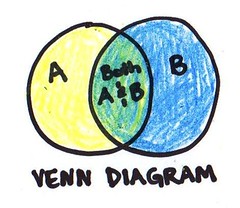Day 3 at Wavecrest Primary saw an hour of play time for the grade 7 teachers, the vice principal and the school’s lab assistant. The way Benji and I have been handling things is sitting the laptop on the desk in the case at the top of the session and saying, “Ok, let’s start. First, would you hook up the laptop please?”
Startled looks.
“Don’t worry. We won’t let you do anything that can’t be fixed.”
Cautiously they began.
We’ve met with the grade-level teachers for every grade in the school.
Some teachers have never touched a laptop before. The adapter on the VGA cable has been a cause of difficulty for most. Once past it, we tell them to play with the SMART Board doing anything they’d like.
A quizzical look.
“Seriously.”
Eventually they start to play.
By the end of the hour, once they’ve learned how to shut down and pack up the laptop, every teacher says something to the effect of “I didn’t know I could do that.”
It’s pretty awesome to see teachers get so jazzed about something they can use immediately in their practice.
Today, after our sessions, I got to visit classes.
I started with Ms. Hendricks’ Reception Level (kindergarten) class. We were learning listening skills by clapping when she said the word “sun” – more difficult than you might think.
From there, I joined Ms. La Vita’s grade 4 class in the computer lab. They were using Encarta Kids to find maps of South Africa. Then, Ms. La Vita let them use the Games and Activities section.
Twenty-six computers, 40 plus learners. They were 2 to a machine. Except Wallace. He’d sat at the machine with the bunk monitor.
I tried to fix it but I couldn’t.
I pulled out my laptop.
We looked at pictures from this year and last on iPhoto. I was getting ready to go talk to the rest of the class, so I opened Word. “Write a note about whatever you want,” I said.
“Write a note to who?”
“To me.”
“Ok,” he said with a pensive look.
Fifteen minutes later, Wallace waved me to the back of the room.
Here’s what he wrote:
I know he doesn’t know me. I know I’m not really his hero. But, he typed it for me. He was proud of it. So, no matter how cynical you are, let me think, for today, that I’m Wallace’s hero and he’ll miss me.
 I wasn’t quite certain what to expect when meeting the principal of Wavecrest Primary School Wednesday.
I wasn’t quite certain what to expect when meeting the principal of Wavecrest Primary School Wednesday.

 Khanyiso, Mlungisi and I were in charge of leading the session on multimedia in the classroom Wednesday. It was the afternoon and the usual grumblings about too much theory and not enough practice had begun in a small contingent of teachers.
Khanyiso, Mlungisi and I were in charge of leading the session on multimedia in the classroom Wednesday. It was the afternoon and the usual grumblings about too much theory and not enough practice had begun in a small contingent of teachers. When I’m playing “What if?” and I come up with this scenario, I imagine someone tripping over a chord and the entire country making that cartoony power-down sound.
When I’m playing “What if?” and I come up with this scenario, I imagine someone tripping over a chord and the entire country making that cartoony power-down sound. Standing in line Thursday for lunch, one of the e-Personnel turned to me and questioned, “Zac, when will you be giving a workshop on how to have your energy?”
Standing in line Thursday for lunch, one of the e-Personnel turned to me and questioned, “Zac, when will you be giving a workshop on how to have your energy?”
 Tuesday, we ended Day 2 with an
Tuesday, we ended Day 2 with an